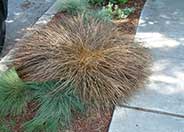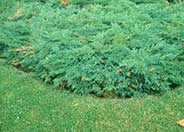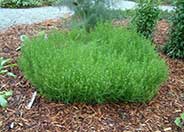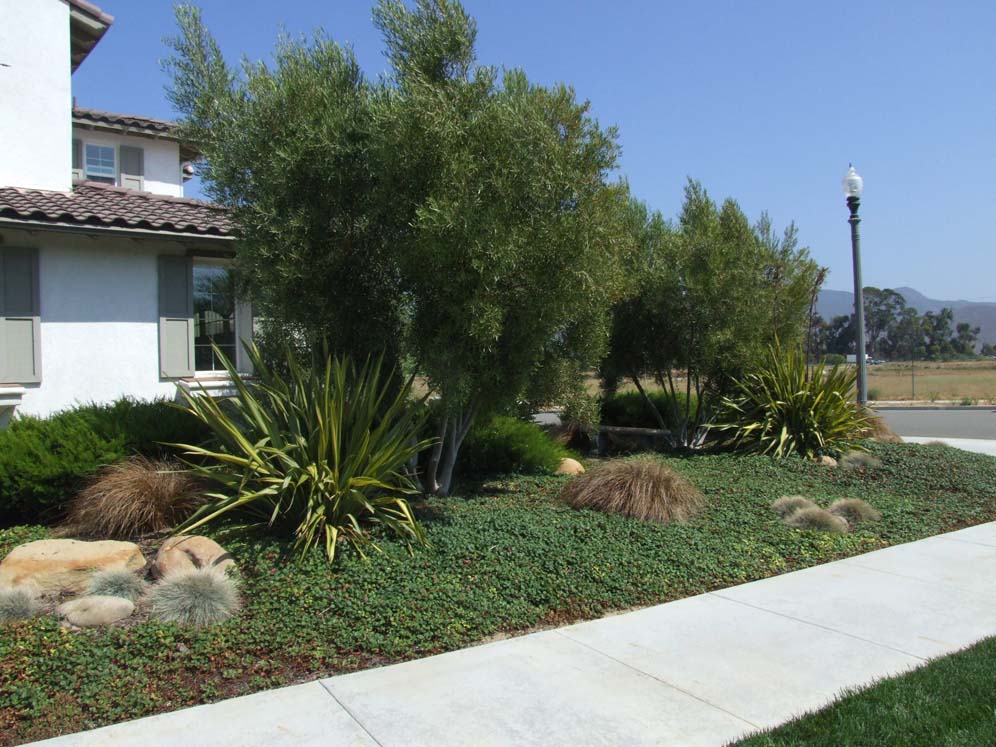
Common name:Blue Fescue
Botanical name:Festuca glauca
This ground cover/grass will grow less than 1' tall and has small, blue green leaves.

Common name:Curly Top Sedge
Botanical name:Carex buchananii
This orange bronze ornamental grass/reed is 2'-3' tall and 1'-2' wide and does best in full sun to part shade.

Common name:New Zealand Flax
Botanical name:Phormium tenax
New Zealand Flax is a large, bold plant with stiffly vertical, sword-like, green leaves that arise from its base. It should be grown under full sun for best color. Varieties will offer different growth habits and leaf color.

Common name:Scandia Juniper
Botanical name:Juniperus sabina 'Scandia'
Juniperus sabina 'Scandia' has dense, bright green foliage. It grows to 1' high and 6'-8' wide. This plant is a ground cover. Junipers are highly combustible plants.

Common name:Olive
Botanical name:Olea europaea
This broad tree will grow to 40' tall and has small, gray green leaves with fleshy black fruit that appears in fall. Purchase fruitless varieties to avoid the mess.

Common name:Green Lavender Cotton
Botanical name:Santolina rosmarinifolia
Santolina is an amazingly tough plant with small, yellow, button-sized flowers that cover the 3' tall and 3' wide shrub in the summer months. The green leaves are very thin and needle like. This plant requires absolutely no care in most environments once established. Too much water will lead to mortality. Best grown in well drained soils.

Common name:Beach Strawberry, Sand Strawberry
Botanical name:Fragaria chiloensis
This perennial grows 4"-8" high with tooth-edged leaves and ornamental strawberries during the fall. Cut back or mow in early spring to encourage new growth.
Dealing With Drought
More than half of the water used at your home is for outside purposes. Studies show that on average, half of the water used outdoors is wasted. The leading cause of waste is incorrectly set and poorly managed irrigation controllers. The second biggest cause of wastage is broken irrigation equipment that goes undetected. There are a few basic things you can do to make a big difference in your water use.
Click in the green box for more information
| Designer: | Verdant Corner |
Photographer: GardenSoft |
Soils and Compost:
Maintain a two to four inch layer of mulch on the soil surface to reduce weeds, infiltrate rain water, and reduce compaction.
Integrated Pest Management:
Attract, or buy beneficial insects such as ladybugs and lacewings to control pest outbreaks in your garden.

